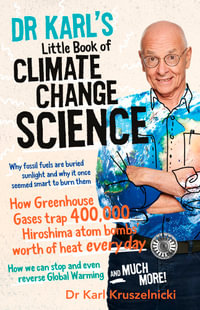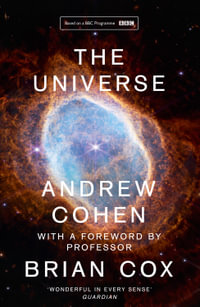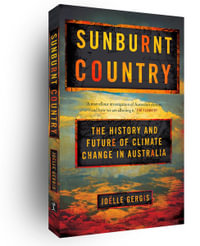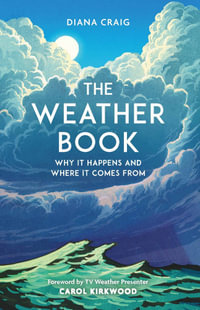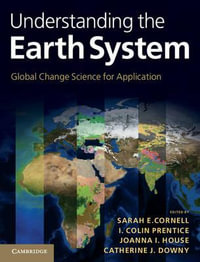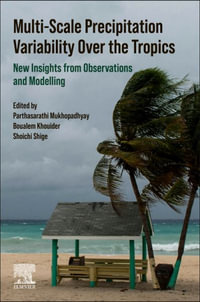
Air Pollution Modeling and its Application XXIII
By: Douw Steyn (Editor), Rohit Mathur (Editor)
Paperback | 17 September 2016
At a Glance
680 Pages
23.39 x 15.6 x 3.45
Paperback
$349.17
or 4 interest-free payments of $87.29 with
orAims to ship in 7 to 10 business days
Part I Air quality and human health.- Use of air quality modeling results in health effects research; A. Russell et al.- 2 Air quality effects on human health; J. Brandt et al.- 3 Development of model-based air pollution exposure metrics for use in epidemiologic studies; V. Isakova et al.- 4 Improved spatiotemporal air pollutant mixture characterization for health studies; H.A. Holmes et al.- 5 Advances in linked air quality, farm management and biogeochemistry models to address bidirectional ammonia flux in CMAQ; E.J. Cooter et al.- 6 A temporal NOx emissions trading system: case study of US power plants; S. Morteza Mesbah et al.- 7 Source attribution of attainment and exposure-based ozone metrics in North America; A. Pappin, A. Hakami.- 8 CASTNET methodology for modeling dry and total deposition; C.M. Rogers et al.- 9 ACCEPTED: an Assessment of Changing Conditions, Environmental Policies, Time-activities, Exposure and Disease; A. Delcloo et al.- Part II Climate change and air quality.- 10 Studying aerosol-cloud-climate interactions over East Asia using WRF/Chem; Y. Zhang et al.- 11Investigation of trends in aerosol direct radiative effects over North America using a coupled meteorology-chemistry model; R. Mathur et al.-12 Future year air quality change due to growth in aircraft emissions and changes in climate; S. Arunachalam et al.- Part III Aerosols in the atmosphere.- 13 The use of a Non Negative Matrix Factorization method combined to PM2.5 chemical data for a source apportionment study in different environments; A. Kfoury et al.- 14 On the interplay between upper and ground levels dynamics and chemistry in determining the surface aerosol budget; G. Curci et al.- 15 Modeling of aerosol indirect effects with WRF/Chem over Europe; P. Tuccella et al.- 16 The influence of cloud chemical processes on the formation of secondary particulate matter; R. Schroedner et al.- 17 An improved volatility basis set for modeling organic aerosol in both CAMx and CMAQ; B.Koo et al.- 18 Issues related to on/offline meteorological and atmospheric chemistry model coupling; J. Kushta et al.- 19 Increases in wintertime oxidation capacity counteract the success of emission reduction measures in Europe with respect to secondary inorganic aerosols; D. Brunner et al.- 20 Investigating the contribution of biogenic emissions to the formation of secondary pollutants in Portugal; O. Tchepel et al.- 21 Modelling aerosol-cloud-meteorology interaction: a case study with a fully coupled air quality model (GEM-MACH); W. Gong et al.- 22 Evaluation of cloud chemistry mechanism towards laboratory experiments; Y. Long et al.- 23 Effects of surf zone sea-spray particles on aerosol concentration in coastal area; G. Tedeschi, J. Piazzola.- 24 Novel pathways to form secondary organic aerosols: glyoxal SOA in WRF/Chem; C. Knote et al.- 25 Modeling seasonal changes in organic aerosol composition at the puy de Dome (France); C. Barbet et al.- 26 Using WRF-CMAQ air quality modelling system to estimate BaP concentrations over Zaragoza (Spain); R. San Jose et al.- 27 The POAEMM project: prediction of spatial and temporal variation of marine aerosols in coastal area; G. Tedeschi et al.- 28 An integrated Weather and Sea State Forecasting system for the Arabian Peninsula (WASSF); J. Al Qahtani et al.- 29 Modelling past and future changes in secondary inorganic aerosol concentrations in the UK; R. Ots et al.- Part IV Regional and intercontinental modeling.- 30 Modelling the impact of energy transitions on air quality and source receptor relations; C. Hendriks et al.- 31 Impact of mercury chemistry on regional concentration and deposition patterns; J. Bieser et al.- 32 A multiscale modeling study to assess impacts of full-flight aircraft emissions on upper troposphere and surface air quality; L. P. Vennam et al.- 33 Relevance of photolysis frequencies calculation aspects to the ozone concentration simulation; M. Uphoff et al.- 34 Air pollution in Chi
ISBN: 9783319346809
ISBN-10: 3319346806
Series: Springer Proceedings in Complexity : Book 23
Published: 17th September 2016
Format: Paperback
Language: English
Number of Pages: 680
Audience: Professional and Scholarly
Publisher: Springer Nature B.V.
Country of Publication: CH
Dimensions (cm): 23.39 x 15.6 x 3.45
Weight (kg): 0.93
Shipping
| Standard Shipping | Express Shipping | |
|---|---|---|
| Metro postcodes: | $9.99 | $14.95 |
| Regional postcodes: | $9.99 | $14.95 |
| Rural postcodes: | $9.99 | $14.95 |
How to return your order
At Booktopia, we offer hassle-free returns in accordance with our returns policy. If you wish to return an item, please get in touch with Booktopia Customer Care.
Additional postage charges may be applicable.
Defective items
If there is a problem with any of the items received for your order then the Booktopia Customer Care team is ready to assist you.
For more info please visit our Help Centre.
You Can Find This Book In
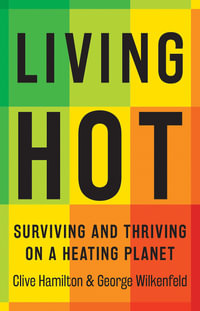
BLACK FRIDAY
RRP $28.00
$15.50
OFF

BLACK FRIDAY
Paperback
RRP $22.99
$11.50
OFF
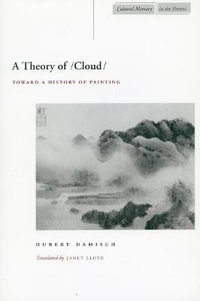
BLACK FRIDAY
RRP $61.75
$15.50
OFF
This product is categorised by
- Non-FictionScienceChemistryPhysical Chemistry
- Non-FictionEarth Sciences, Geography, Environment, PlanningEarth SciencesMeteorology & Climatology
- Non-FictionSciencePhysicsMathematical Physics
- Non-FictionSciencePhysicsApplied PhysicsGeophysics
- Non-FictionEarth Sciences, Geography, Environment, PlanningThe EnvironmentPollution & Threats to the Environment
- Non-FictionReference, Information & Interdisciplinary SubjectsResearch & InformationInformation theoryCybernetics & Systems Theory
- Non-FictionMedicineMedicine in GeneralPublic Health & Preventive MedicinePersonal & Public Health / Health EducationEnvironmental Factors
- Non-FictionEngineering & TechnologyEnvironmental SciencePollution Control
